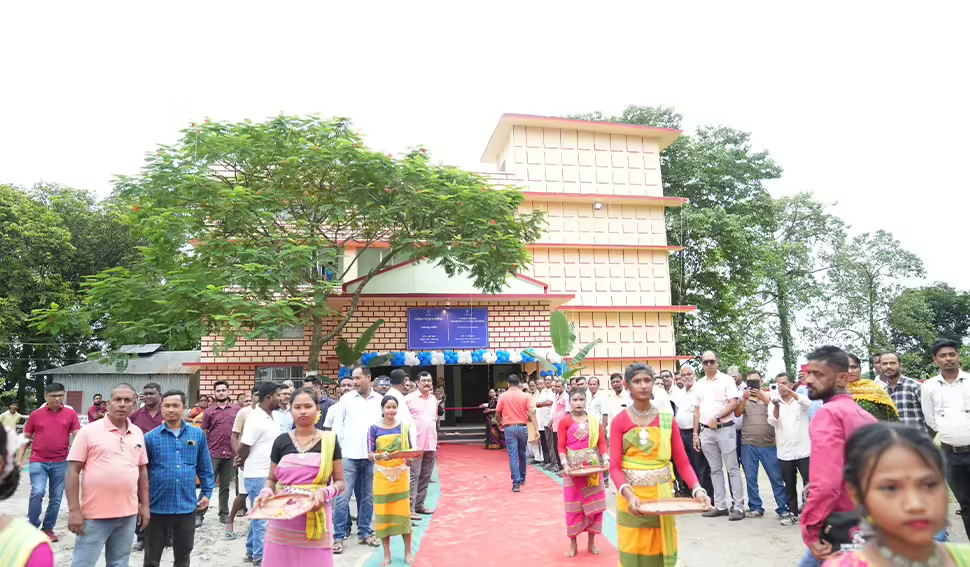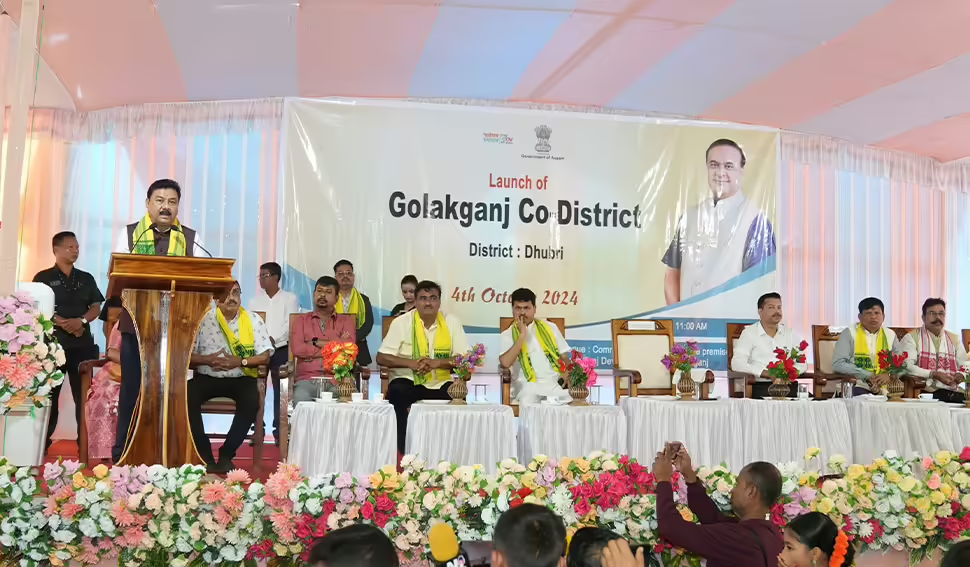Assam launches 21 co-districts, leading the way in administrative reform

21 newly created co-districts in Assam were inaugurated by various state ministers on Friday, marking a significant administrative reform. With this move, Assam has become the first state in India to adopt the co-district model, aimed at enhancing governance and improving the accessibility of public services for citizens. The Assam government has established a total of 39 co-districts, with the primary goal of bringing administration closer to the people and streamlining service delivery.
Of the 39 co-districts, 18 are set to be inaugurated on Saturday. Chief Minister Himanta Biswa Sarma is scheduled to inaugurate the Jalukabari co-district, located in his assembly constituency under Kamrup Metropolitan, on the same day. This initiative is seen as part of the government’s efforts to ensure efficient governance and public service delivery across the state.
The inaugural phase of Assam’s new administrative structure, the co-districts, was launched on Friday with the official opening of 21 co-districts across 14 districts. The newly inaugurated co-districts include Bilasipara, Golakganj, Goalpara West, Rangia, Kaliabor, Sipajhar, Dalgaon, Naduar, Behali, Gohpur, Dhakuakhana, Jonai, Margherita, Sadiya, Khowang, Titabor, Dergaon, Sarupathar, Bokakhat, Patharkandi, and Ram Krishna Nagar.
On Saturday, another 18 co-districts are set to be launched across 11 districts. These include Jalukbari, New Guwahati, Dispur, Dimoria, Abhayapuri, Raha, Lumding, Laharighat, Jagiroad, Dhekiajuli, Doomdooma, Naharkatia, Duliajan, Tingkhong, Nazira, Demow, Mahmora, and Lakhipur.
These co-districts are designed to function as smaller administrative units under the district level, allowing for quicker and more efficient delivery of essential government services. The aim is to bring governance closer to the citizens, providing them with easier access to services like land revenue management, certificate issuance, food supply regulation, and local event permissions. Additionally, co-districts will play a significant role in overseeing disaster management efforts, including flood relief operations, ensuring more effective local response during emergencies.
The co-districts will deal with land revenue matters, development works and welfare schemes, food and civil supplies, excise, panchayat and rural development and disaster management.

Minister for Panchayat and Rural Development Ranjeet Kumar Dassa inaugurated the two co-districts of Bilasipara and Golakganj in Dhubri district while Minister for Handloom and Textiles U G Brahma was present at Goalpara (West).
Minister for Environment and Forests Chandra Mohan Patowary inaugurated the co-district of Rangia in Kamrup district,
Transport minister Keshab Mahanta at Kaliabor in Nagaon district and Minister for Housing and Urban Affairs Ashok Singhal at Sipajhar and Dalgaon in Darrang district.
Minister for Water Resources Pijush Hazarika inaugurated the co-districts of Naduar and Behali in Sonitpur district, Minister for Sports and Youth Affairs Nandita Garlosa at Gohpur in Biswanath and Education Minister Ranoj Pegu at Jonai in Dhenaji district.
Industry and Commerce minister Bimal Borah inaugurated the co-districts of Margherita and Sadiya in Tinsukia district and Revenue and Disaster Management minister Jogen Mohan at Khowang in Dibrugarh district.
Finance minister Ajanta Neog inaugurated Titabor in Jorhat district, Agriculture minister Atul Bora at Bokakhat while Labour minister Sanjoy Kishan was at Dergaon and Sarupathar in Golaghat district.
In Barak Valley, Tourism minister Jayanta Malla Baruah inaugurated the co-districts of Patrharkandi and Ram Krishna Nagar in Karimganj district.

Leave a Reply